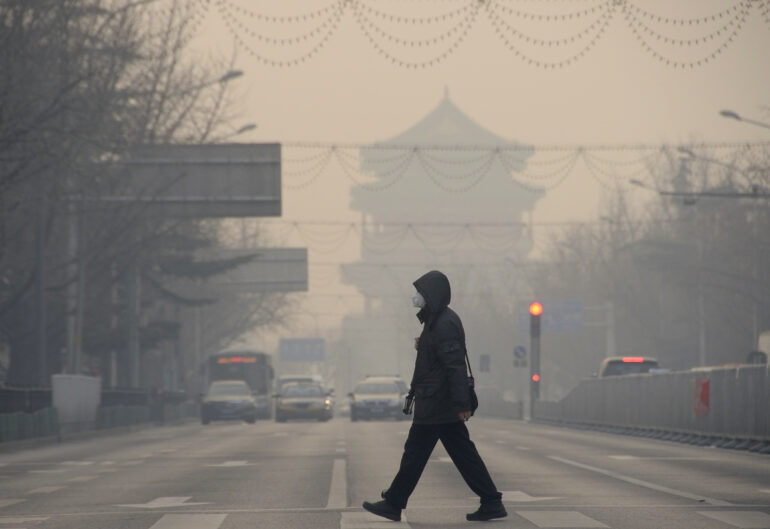Fine particulate matter (PM2.5) and ozone exposure are major public health problems in China. Although useful, atmospheric models used to analyze these and other air quality concerns over the years are expensive to run, limiting how often researchers can use them.
Published in GeoHealth, new results from Conibear et al worked around this limitation by training machine learning algorithms to find associations between the inputs and outputs of atmospheric models. The researchers then used the algorithms to analyze emission levels and the origins of those emissions from 2010 to 2020.
They found that efforts to reduce PM2.5 emissions are working in China. Average PM2.5 levels across the country have dropped from their peak of 52.8 micrograms per cubic meter (mg/m3) in 2012 to 33.5 mg/m3 in 2020. The change brings PM2.5 levels from about 10 times above the World Health Organization’s (WHO) guideline to about seven times the guideline. The authors discovered that the biggest drops in PM2.5 generation occurred in the industrial and residential sectors. Improvements in transportation, agriculture, and power generation also played small roles.
Although PM2.5 levels appear to have reached a peak in 2012 and then declined—a trend supported by on-the-ground observations—the situation with ozone is a bit more complicated. The researchers’ models suggest that ozone levels have dropped since 2015, but on-the-ground measurements show a sharp increase. This discrepancy may be the result of imperfections in simulations, according to the authors.
Overall, the researchers estimate that the drop in PM2.5 prevented 187,800 premature deaths in 2020, or 9% of the deaths attributable to PM2.5 exposure. Reducing PM2.5 levels to 25 mg/m3, which the WHO recommends as an interim goal for countries trying to reach the recommended annual mean of 5 mg/m3, would require a further 80% drop in industrial and residential emissions below 2020 levels. The authors predict that such a drop would prevent another 440,800 premature deaths per year.
More information:
Luke Conibear et al, Emission Sector Impacts on Air Quality and Public Health in China From 2010 to 2020, GeoHealth (2022). DOI: 10.1029/2021GH000567
Provided by
American Geophysical Union
This story is republished courtesy of Eos, hosted by the American Geophysical Union. Read the original story here.
Citation:
Despite improvements, China’s air remains unsafe (2022, June 24)
